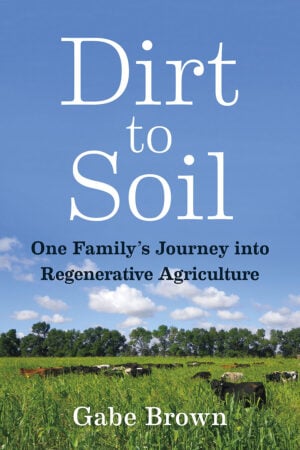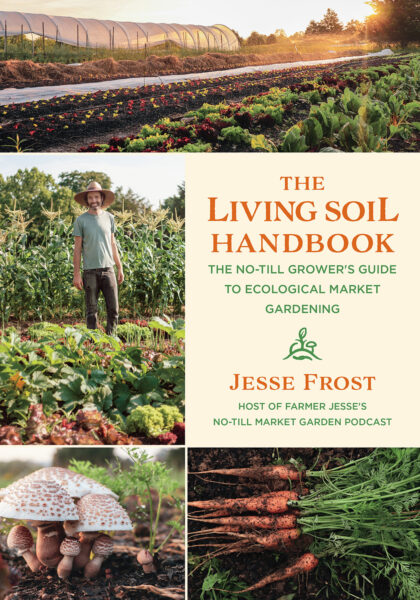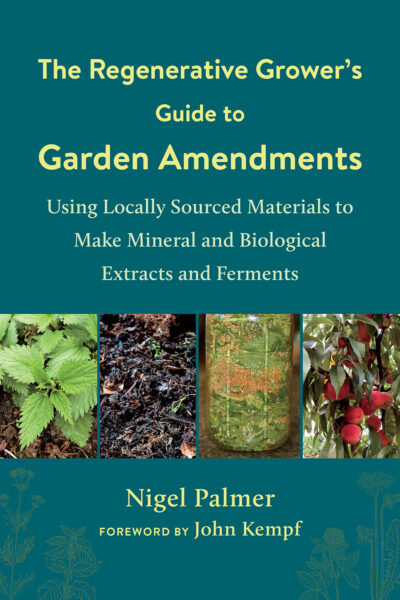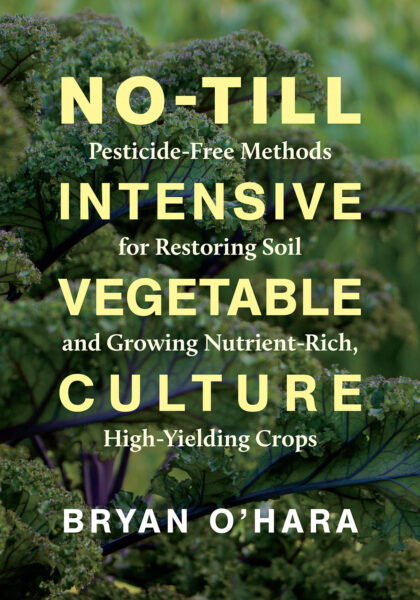5 Principles of Soil Health
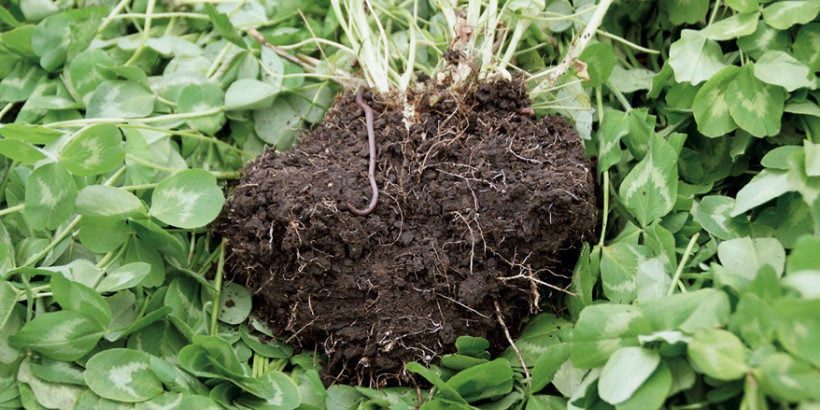
Wondering how to make your soil (and plants) thrive? Use these principles of soil health to properly prepare your farm or garden to grow.
The following excerpt is from Dirt to Soil by Gabe Brown. It has been adapted for the web.
(Photography curtesy of Gabe Brown.)
Prefer audio?
Listen to the excerpt below from the audiobook of Dirt to Soil.
The Importance of Soil Health
Our lives depend on soil. This knowledge is so ingrained in me now that it’s hard for me to believe how many soil-destroying practices I followed when I first started farming. I didn’t know any better. In college I was taught all about the current industrial production model, which is a model based on reductionist science, not on how natural ecosystems function.
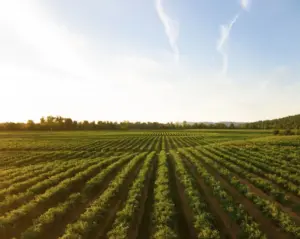 The story of my farm is how I took a severely degraded, low-profit operation that had been managed using the industrial production model and regenerated it into a healthy, profitable one.
The story of my farm is how I took a severely degraded, low-profit operation that had been managed using the industrial production model and regenerated it into a healthy, profitable one.
The journey included many trials and constant experimentation, along with many failures and some successes.
I’ve had many teachers, including other farmers and ranchers, researchers, ecologists, and my family.
But the best teacher of all is nature herself.
In the everyday work of my farm, most of the decisions I make, in one way or another, are driven by the goal of continuing to grow and protect soil.
The Five Principles of Soil Health
I follow five principles that were developed by nature, over eons of time.
They are the same any place in the world where the sun shines and plants grow. Gardeners, farmers, and ranchers around the world are using these principles to grow nutrient-rich, deep topsoil with healthy watersheds.
1. Limited Disturbance
Limit mechanical, chemical, and physical disturbance of soil. Tillage destroys soil structure.
It is constantly tearing apart the “house” that nature builds to protect the living organisms in the soil that create natural soil fertility.
Soil structure includes aggregates and pore spaces (openings that allow water to infiltrate the soil). The result of tillage is soil erosion, the wasting of a precious natural resource.
Synthetic fertilizers, herbicides, pesticides, and fungicides all have negative impacts on life in the soil as well.
2. Armor
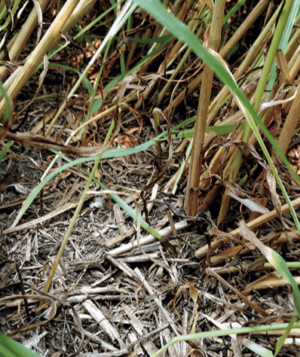
Armoring the soil is one way to be resilient. The armor is the residue from a previous cover crop and a cash grain crop is growing through the armor. Photo curtesy of Gabe Brown.
Keep soil covered at all times. This is a critical step toward rebuilding soil health. Bare soil is an anomaly—nature always works to cover soil.
Providing a natural “coat of armor” protects soil from wind and water erosion while providing food and habitat for macro- and microorganisms.
It will also prevent moisture evaporation and germination of weed seeds.
3. Diversity
Strive for diversity of both plant and animal species. Where in nature does one find monocultures? Only where humans have put them!
When I look out over a stretch of native prairie, one of the first things I notice is the incredible diversity.
Grasses, forbs, legumes, and shrubs all live and thrive in harmony with each other. Think of what each of these species has to offer.
Some have shallow roots, some deep, some fibrous, some tap. Some are high-carbon, some are low-carbon, some are legumes. Each of them plays a role in maintaining soil health.
Diversity enhances ecosystem function.
4. Living Roots
Maintain a living root in soil as long as possible throughout the year. Take a walk in the spring and you will see green plants poking their way through the last of the snow.
Follow the same path in late fall or early winter and you will still see green, growing plants, which is a sign of living roots.
Those living roots are feeding soil biology by providing its basic food source: carbon.
This biology, in turn, fuels the nutrient cycle that feeds plants. Where I live in central North Dakota, we typically get our last spring frost around mid-May and our first fall frost around mid-September.
I used to think those 120 days were my whole growing season. How wrong I was.
We now plant fall-seeded biennials that continue growing into early winter and break dormancy earlier in the spring, thus feeding soil organisms at a time when the cropland used to lie idle.
5. Integrated Animals
Nature does not function without animals. It is that simple. Integrating livestock onto an operation provides many benefits. The major benefit is that the grazing of plants stimulates the plants to pump more carbon into the soil. This drives nutrient cycling by feeding biology.
Of course, it also has a major, positive impact on climate change by cycling more carbon out of the atmosphere and putting it into the soil.
And if you want a healthy, functioning ecosystem on your farm or ranch, you must provide a home and habitat for not only farm animals but also pollinators, predator insects, earthworms, and all of the microbiology that drive ecosystem function.
Recommended Reads
Recent Articles
Interested in growing trees? Here are some tips on successfully planting, transplanting, and pruning trees to create a flourishing forest garden! The following is an excerpt from The Home-Scale Forest Garden by Dani Baker. It has been adapted for the web. Planting Potted Trees and Shrubs If you order potted trees, check with your supplier to…
Read MoreWith the right strategies and practices, composting on a small farm is surprisingly easy and inexpensive. Just follow these steps for making compost, and your farm will be thriving in no time! The following excerpt is from The Lean Farm Guide to Growing Vegetables by Ben Hartman. It has been adapted for the web. (All photographs by Ben…
Read MoreGarlic mustard: while known as “invasive,” this plant can be consumed in its entirety and has great nutritional value. Plus, the garlic-flavor is a perfect addition to any recipe that calls for mustard! The following are excerpts from Beyond the War on Invasive Species by Tao Orion and The Wild Wisdom of Weeds by Katrina…
Read MoreEveryone loves a refreshing, fermented, nutritious drink…even your garden! Take your fermentation skills out of the kitchen and into the garden by brewing fermented plant juice. The following is an excerpt from The Regenerative Grower’s Guide to Garden Amendments by Nigel Palmer. It has been adapted for the web. How to Make Fermented Plant Juice Fermented…
Read MoreWant to see your crops thrive this upcoming growing season? The key is in soil fertility and health. Spend time maintaining your soil’s health to guarantee bigger and better crops come harvest time! The following is an excerpt from No-Till Intensive Vegetable Culture by Bryan O’Hara. It has been adapted for the web. What Is Soil Fertility?…
Read More

